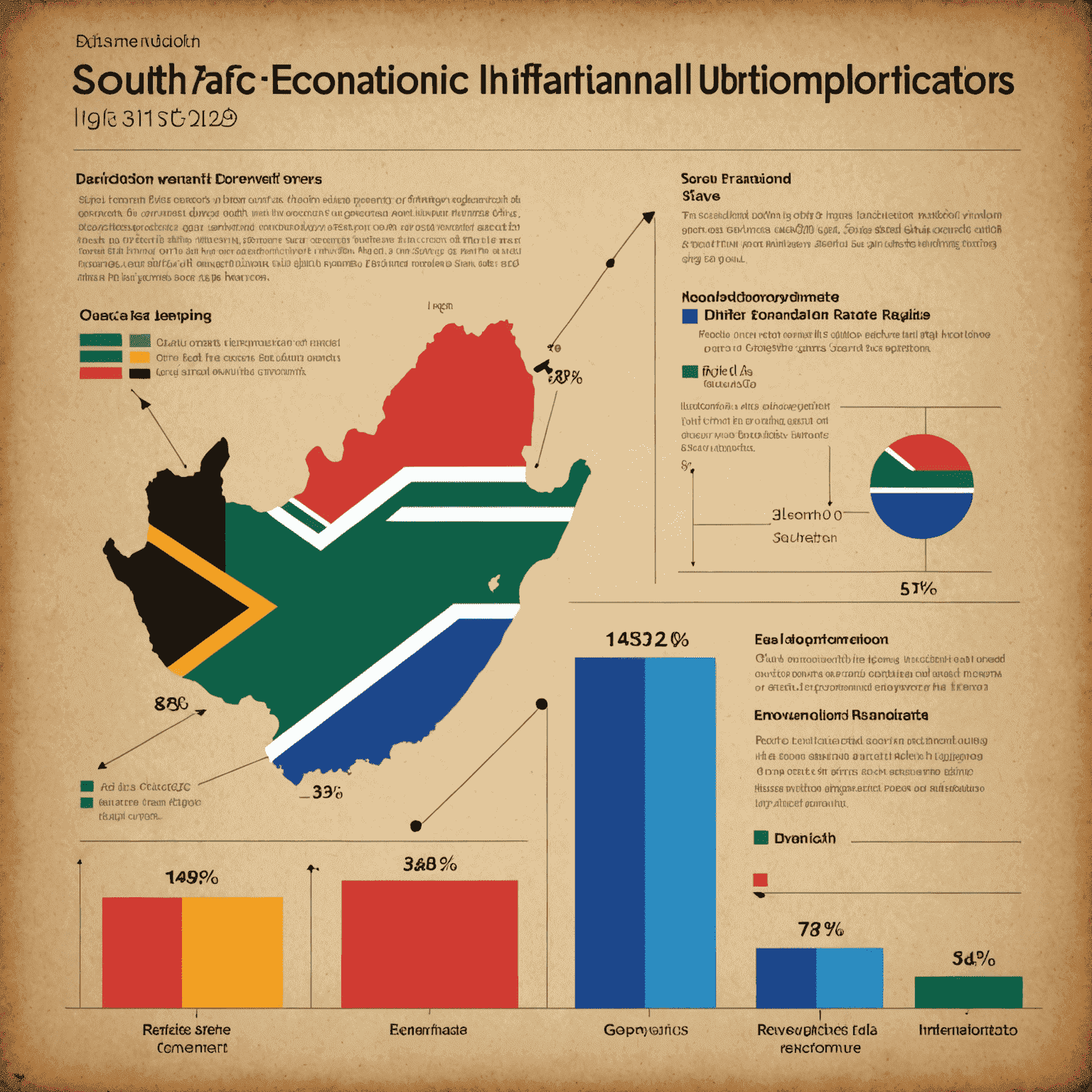Economic Indicators: Shaping South Africa's Financial Landscape

Understanding key economic indicators is crucial for both personal and business financial strategies in South Africa. Let's delve into the current state of these indicators and their implications for your financial planning.
GDP Growth Rate
South Africa's Gross Domestic Product (GDP) growth rate has been fluctuating in recent years. As of the latest quarter, it stands at X.X%. This moderate growth suggests a cautiously optimistic outlook for businesses and individuals alike.
Inflation Rate
The current inflation rate in South Africa is hovering around X.X%. This rate affects the purchasing power of the Rand and impacts both savings and investment strategies.
Unemployment Rate
South Africa's unemployment rate remains a significant challenge, currently standing at XX.X%. This high rate has far-reaching effects on the economy and personal financial security.
Interest Rates
The South African Reserve Bank's repo rate is currently at X.X%. This rate influences borrowing costs and savings returns across the economy.
Exchange Rate
The Rand's exchange rate, particularly against major currencies like the US Dollar and Euro, has shown some volatility. Currently, 1 USD is equivalent to approximately XX.XX ZAR.
Conclusion: Crafting Your Financial Blueprint
These economic indicators paint a complex picture of South Africa's financial landscape. While challenges persist, there are also opportunities for those who plan strategically. Here are some key takeaways for your financial planning:
- Diversify your investment portfolio to spread risk
- Build and maintain an emergency fund to weather economic uncertainties
- Stay informed about economic trends and adjust your financial strategy accordingly
- Consider seeking professional financial advice to optimize your personal or business financial plan
- Explore opportunities for upskilling or additional income streams to enhance financial security
Remember, effective financial planning is an ongoing process. Regularly review and adjust your financial blueprint to align with both personal goals and the changing economic landscape. With careful planning and informed decision-making, you can navigate South Africa's economic waters and chart a course towards financial success.